Download Software to Record Movie Screen on Mac Updated
Download Software to Record Movie Screen on Mac
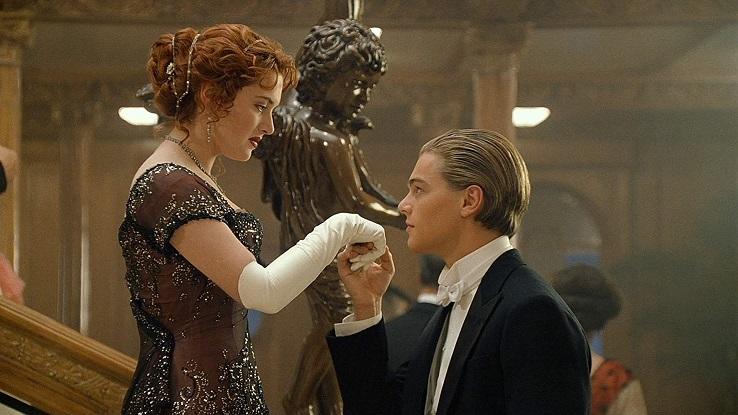
Everyone thinks filmmaking is a g adventure — and sometimes it is. Actors make a lot of coin to perform in character for the photographic camera, and directors and crew members pour incredible talent into creating "movie magic" that makes everything await simple and fun.
However, some of the near famous movies in history had such challenging and frustrating productions that everyone worried they would exist box office flops — or completely scrapped before completion. Take a await at our listing of amazing hit movies that almost didn't make information technology to the big screen.
The Magician of Oz
The Wizard of Oz is an iconic classic, so it's hard to believe the glittering 1939 MGM spectacle was almost never made. From the very get-go, it took 17 screenwriters and six directors to tackle the project. When shooting finally started, filming was a disaster.
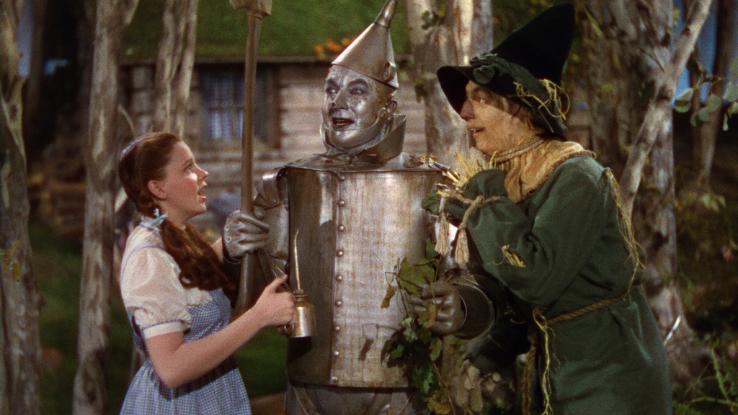
The original Tin Homo, Buddy Ebsen, had to be replaced by Jack Haley because of an allergy to the aluminum brand-upwardly. Dorothy's loyal canine companion, Toto, misbehaved, and the Wicked Witch of the W actress Margaret Hamilton was accidentally burned during filming. Despite the difficulties, the movie grossed more than $two meg and remains a timeless classic.
Fitzcarraldo
The 1982 hazard drama Fitzcarraldo had one of the most difficult productions in picture history. The movie was manager Werner Herzog's insane story of real-life rubber baron Carlos Fermin Fitzcarrald. Shot in Due south America, i of the film's almost famous scenes involves dragging a gigantic steamship upward a hill.
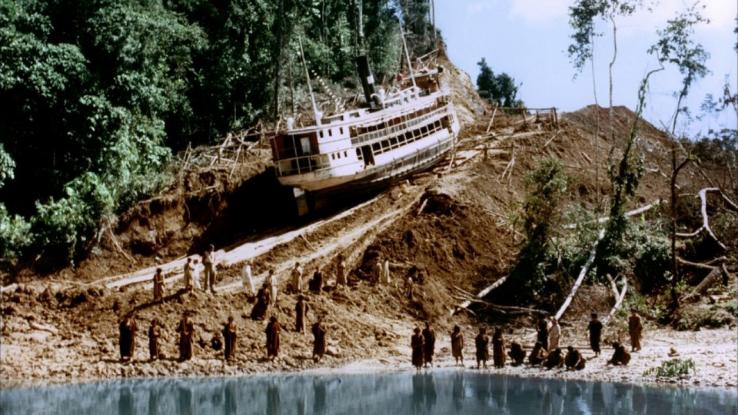
Herzog stubbornly rejected using miniature effects and insisted they shoot the scene with an actual 320-ton steamer. The scene was a disaster — in that location were numerous injuries and fifty-fifty deaths. Actors suffered from dysentery, and two small plane crashes resulted in additional injuries. It's a phenomenon the pic was always completed.
Rapa-Nui
Rapa-Nui was almost doomed from the very showtime. The 1994 historical drama focuses on the history of Easter Isle. Director Kevin Reynolds described the motion-picture show'south shoot as a "nightmare." It was difficult to make because of the remoteness of the location.
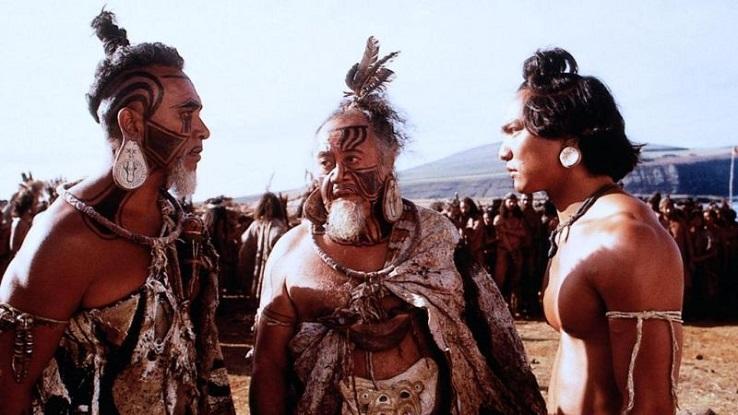
Flights to and from Chile'southward mainland were scarce. Reynolds said, "Nosotros had one flight a calendar week from the mainland, and at that place were times we ran out of food to feed people." In addition to the filming challenges, the movie merely grossed $305,000. Notwithstanding, apparently Reynolds didn't acquire his lesson. Afterward this box-office bomb, he immediately tackled another difficult picture show: Waterworld.
Waterworld
The 1995 science fiction thriller Waterworld involved many aquatic filming locations, which proved to be an expensive headache for everyone involved. Manager Kevin Reynolds and his pic crew had to construct artificial islands far out at sea, which quickly gobbled up the $100 million budget.
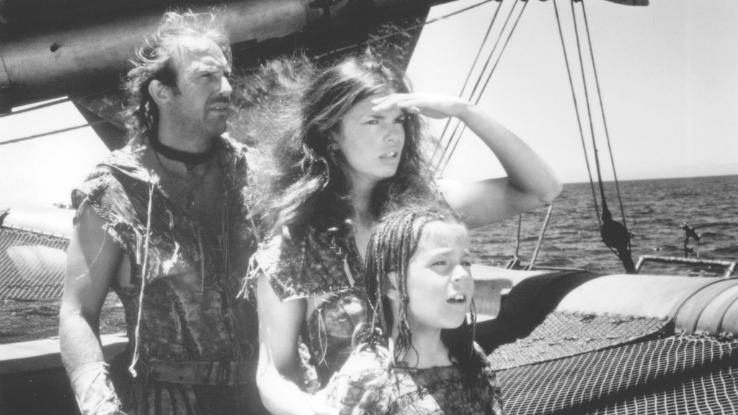
Actors, including Kevin Costner, were transported from dry out land out to the filming locations. In addition, Costner nearly died when he was defenseless in a squall. Ii stuntmen were as well injured, and immature co-star Tina Majorino was stung iii times by jellyfish. Eventually, Reynolds walked away from the projection, and Costner finished the pic himself.
Roar
Information technology's a miracle no ane was killed during the making of the 1981 take chances thriller Roar. The film focuses on wildlife preservationist Hank (Noel Marshall), who lives with a menagerie of lions, tigers and other wild fauna. Marshall, who also wrote, directed and produced the film, decided to work with more than than 100 alive animals — for existent.
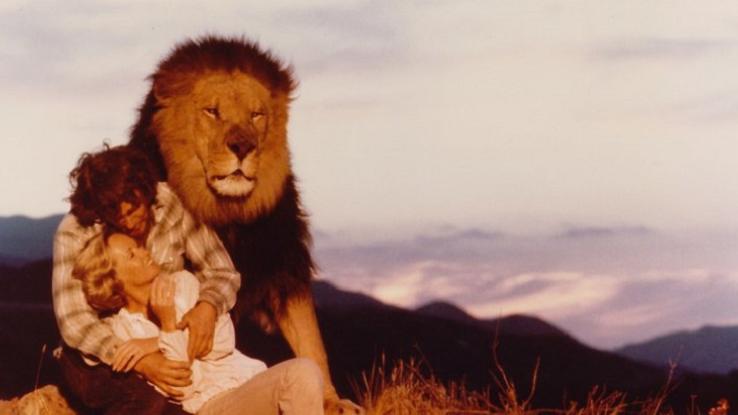
Around 70 cast and crew members suffered injuries. Marshall's married woman, Tippi Hedren, was bitten by a panthera leo in the throat, and his stepdaughter, Melanie Griffith, suffered an injury to the face. Cinematographer Jan de Bont nearly had his scalp torn off. If yous spotter the film and anybody looks scared, information technology's because they were.
American Graffiti
If you remember a drama near a group of teenagers in the 1960s would be simple to brand, think again. George Lucas' 1973 moving-picture show American Graffiti had many backside-the-scenes complications. Outset, a coiffure member was arrested for growing marijuana. Actor Paul Le Mat suffered an allergic reaction to a walnut, and Richard Dreyfuss' head was cut open.
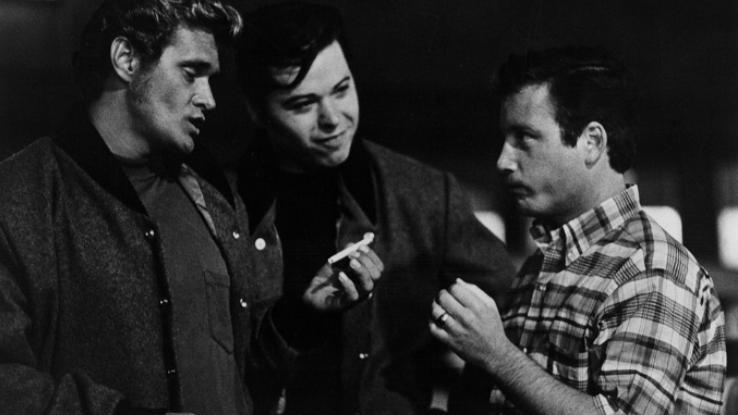
In improver, Harrison Ford was arrested during a bar fight, and someone gear up fire to Lucas' hotel room. The film was a disaster in the making, but information technology became an acclaimed motion-picture show of the 1970s. Information technology grossed $750,000 and remains a cult classic to this day.
The Abyss
James Cameron's 1989 science fiction drama The Abyss was an ambitious project. Featuring a number of underwater scenes, the submersible oil rig took eighteen months to build. The motion picture'southward upkeep was around $2 million. Cast and crew members frequently worked seventy hours a week, and actors Ed Harris and Mary Elizabeth Mastrantonio were on the verge of a mental collapse.
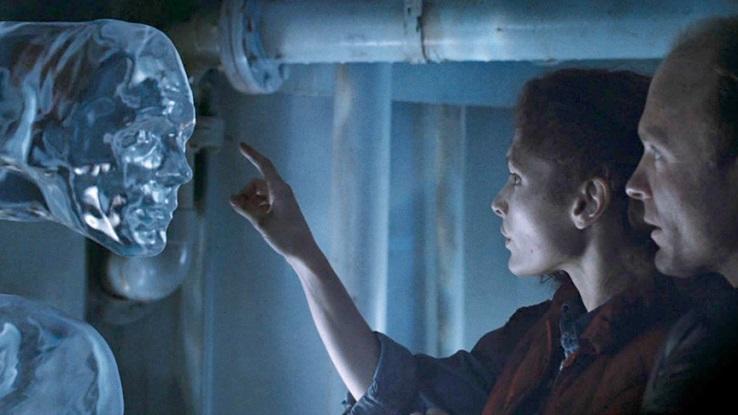
At ane point, Mastrantonio shouted to Cameron, "We are not animals!" This was in response to the director'southward suggestion that the actors should urinate in their wetsuits to salve time between takes. While the picture show was well-received critically and grossed $90 million, everyone was glad when it was over.
The Island of Dr. Moreau
Director Richard Stanley desperately wanted to commence on his dream project: an accommodation of H.G. Wells' novel The Island of Dr. Moreau. Stanley was especially thrilled when acclaimed actor Marlon Brando signed on to play the title role. But then, iii days into filming the 1996 thriller, Stanley was fired.
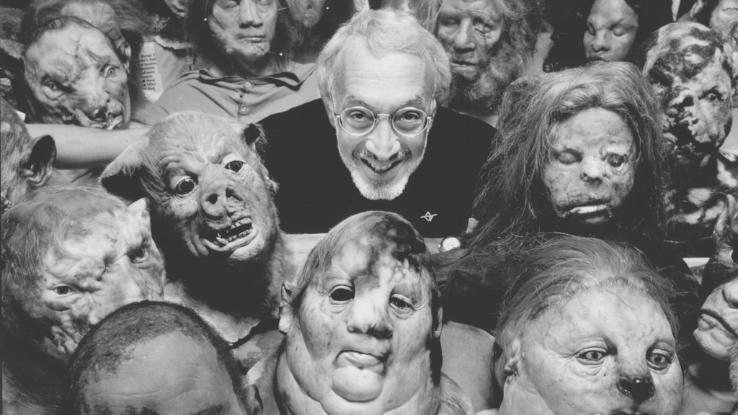
Actor Val Kilmer clashed with Stanley, and intense arguments led producers to fire him and hire John Frankenheimer as a replacement. However, that wasn't the end of the problems, as Kilmer and Brando didn't get along either. (Anyone thinking perchance the problem was Kilmer?)
Apocalypse Now
Francis Ford Coppola was determined to continue his directing success after The Godfather. He decided to conform Joseph Conrad's novel Heart of Darkness into an ballsy war picture about the futility of the Vietnam conflict. This project became the 1979 drama Apocalypse Now.
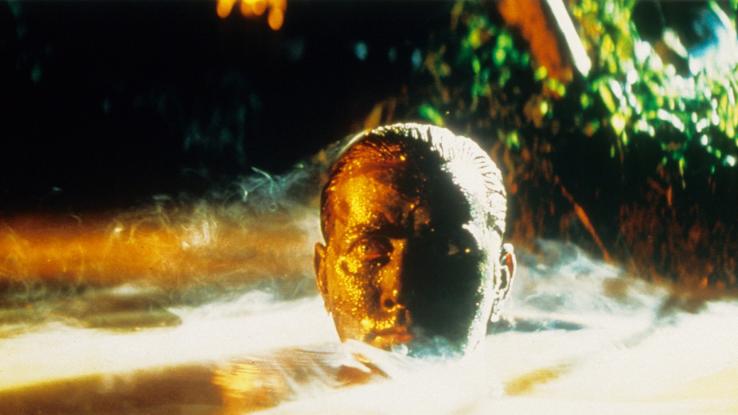
Aiming for realism, Coppola shot the film in the Philippines. The shoot lasted more than a twelvemonth, and anybody endured dreadful storms and script rewrites. Lead histrion Martin Sheen even suffered a centre attack. Coppola described the filming, "We were in the jungle. Nosotros had likewise much money. We had likewise much equipment. And little by trivial, we went insane."
Heaven's Gate
Like to Apocalypse Now, the 1980 action drama Heaven'south Gate spiraled out of control. The picture show fell behind schedule and went over upkeep. Director Michael Cimino'southward obsession with period detail and accuracy led to repeated reconstructions for sets. Additionally, Cimino insisted on an unnecessary number of takes — once even waiting for a particular cloud to float into view. Seriously?
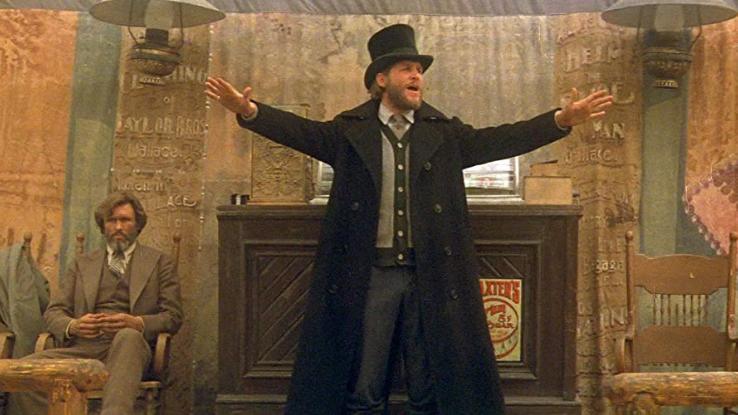
In the end, Cimino spent roughly $44 million on product costs, and the film only grossed $iii.5 million at the box office. While information technology adult a cult following, it didn't earn near plenty money to justify the investment. Did Cimino learn his lesson?
Cleopatra
Cleopatra was always intended to be big. The 1963 romantic ballsy starred Elizabeth Taylor and Richard Burton, and the vast budget allowed for the production coiffure to build elaborate sets. The film remains the most expensive movie ever made — it near bankrupted 20th Century Fox.
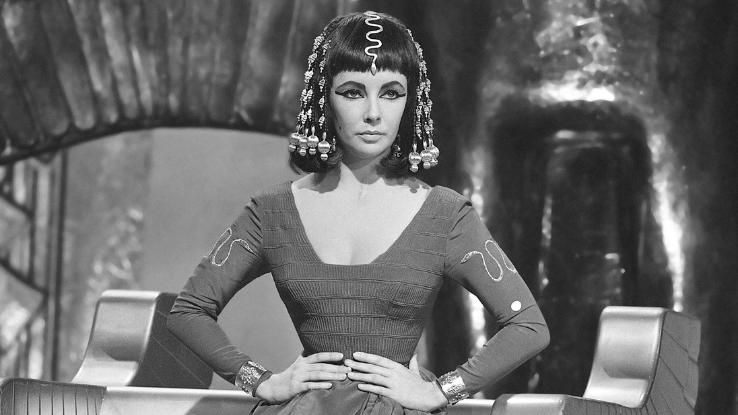
Director Joseph 50. Mankiewicz replaced Rouben Mamoulian shortly after filming began, and production stopped when Taylor became seriously ill. Some of the elaborate sets went unused. Taylor and Burton began an intense love affair that brought a lot of negative attention to the motion-picture show. Despite everything, the movie is all the same regarded equally the most glamorous historic ballsy ever fabricated.
Doctor Dolittle
The 1967 musical fantasy Doctor Dolittle was troubled from the start. It had a difficult star (Rex Harrison), terrible weather for filming, wayward animals, expensive reshoots and poorly chosen filming locations. Information technology was a disaster, and no 1 enjoyed working on the film, including the local residents in the Wiltshire village of Castle Combe, Great britain.
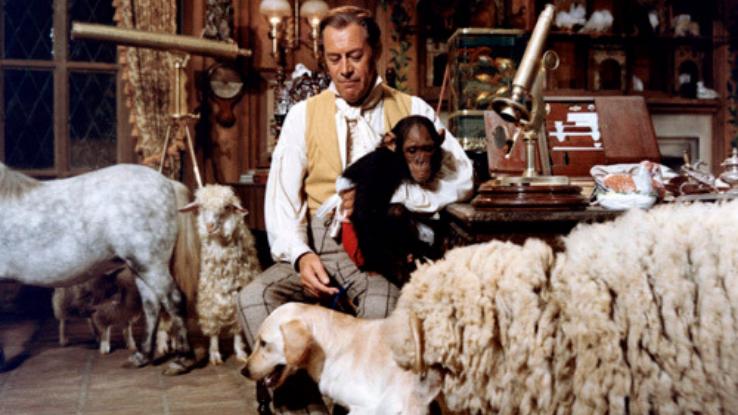
Construction for the film annoyed residents, who had to remove their television aerials from their homes due to the film'southward historical fourth dimension menstruation. The movie cost more than $17 million and merely grossed $half-dozen.2 million. The 1998 remake, starring comedian Eddie Murphy, fared much better.
Sorcerer
Managing director William Friedkin is known for going "all out" for his movies. The Exorcist director synthetic a gigantic span over a Dominican Republic river for his 1977 thriller Sorcerer. When the riverbed dried up, Friedkin relocated to Mexico, where he built some other span over the Papaloapan River. This river besides stale up before filming began.
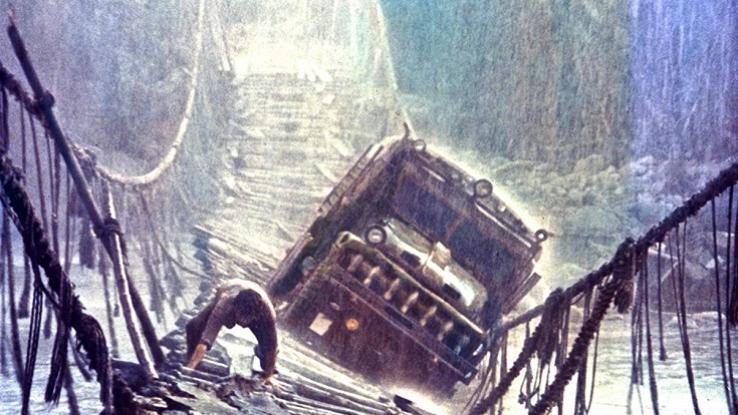
Rivers weren't the simply drama. During filming, fifty crew members became ill with malaria, food poisoning and gangrene. Notwithstanding, Friedkin didn't give up. Everyone else didn't enjoy working on the moving picture, simply the manager says he "wouldn't change a frame" of the flick.
Gremlins
In the pre-CGI days, 1984'southward fantasy horror picture show Gremlins faced many complications. Director Joe Dante and his artistic team dealt with issues caused past the movie'due south dozens of animal effects shots. "Nosotros were inventing the applied science as we went along, every bit well as deviating from the script equally nosotros discovered new aspects of the Gremlins characters," Dante explained.
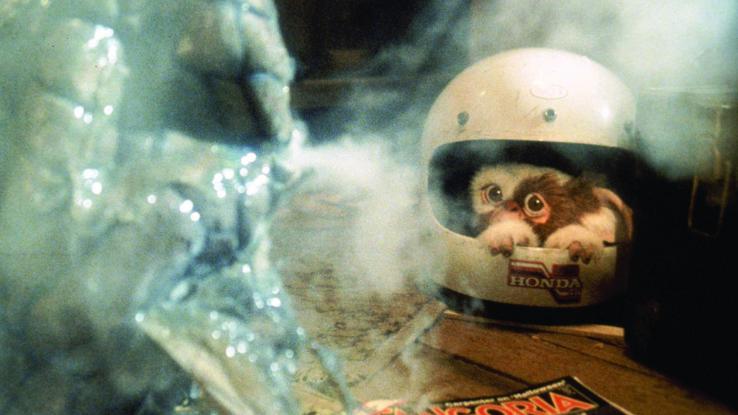
He added, "It really did get maddening after a while. The studio wasn't especially supportive." The process of shooting the special effects became so arduous that the scene where Gizmo is pelted with darts was added to the film strictly to satisfy the crew.
Ishtar
Director Elaine May confessed, "I knew about acting, simply I knew nothing about motion-picture show." She admitted that she felt the 1987 gamble Ishtar was a "screw-up." For i affair, shooting in the Sahara Desert was a bad idea. May and her coiffure were fearful they would be kidnapped, trapped in landmines or caught in the centre of a civil war — if they survived the estrus.
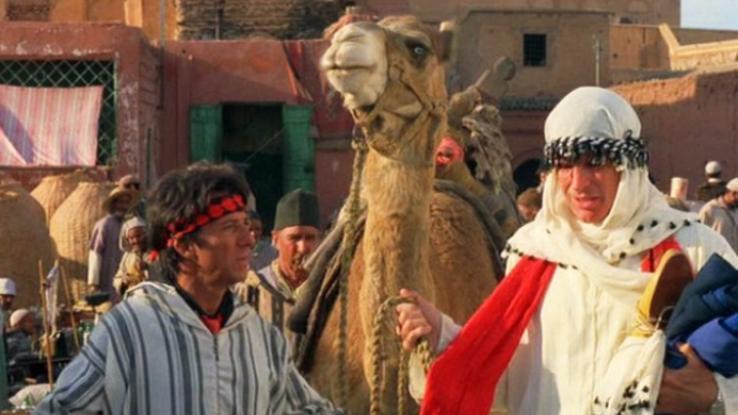
Tensions grew between May and the cast. The director would sometimes shoot scenes more than than 50 times. The pic cost $51 million and only grossed a tertiary of its upkeep. The motion picture has Dustin Hoffman just not much of a cult post-obit. May hasn't directed a film since.
Conflicting 3
The script for the 1992 science fiction thriller Alien iii was repeatedly rewritten, even after sets were congenital and production had already started. Various directors worked on the project before David Fincher stepped on lath. During the unabridged production process, Fincher was frustrated by the bandage, crew and studio producers.
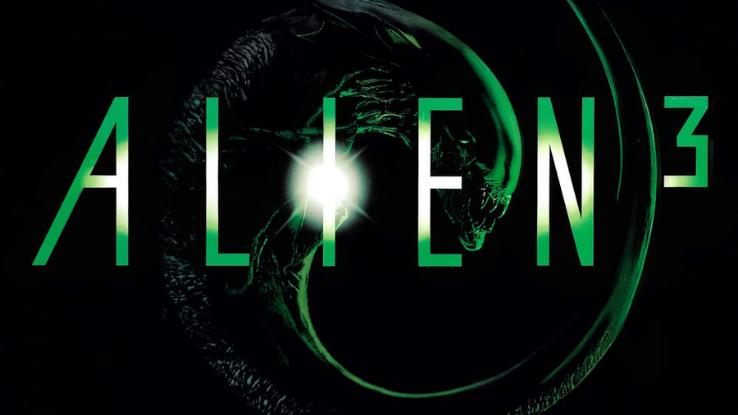
He had to repeatedly reshoot several scenes, and producers then recut the film behind the director'south back. He finally became so upset with the movie that he refused to be associated with it. He was glad to be done with the project, and we can't actually blame him for feeling that way.
The Fountain
Originally, Brad Pitt was supposed to star in the 2006 science fiction drama The Fountain. The motion-picture show centered around him, merely then he dropped the motion picture due to script disagreements but weeks before production. Director Darren Aronofsky struggled to find a replacement actor — they somewhen chose Hugh Jackman — and Warner Bros. shut the product down.
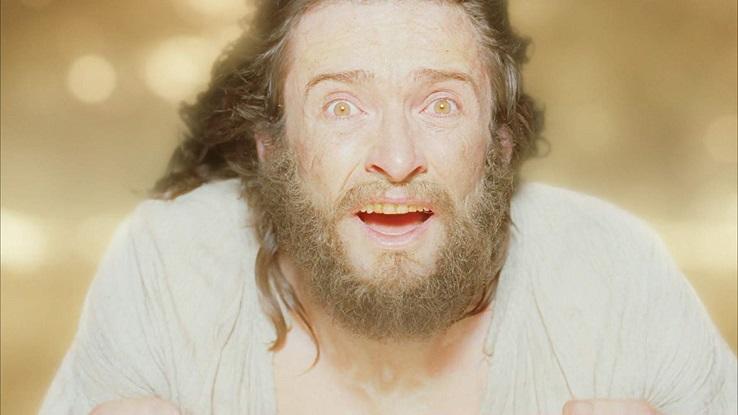
Two years later, Aronofsky returned to the projection with a smaller budget of $35 meg. From starting time to terminate, information technology took him almost five years to get the moving-picture show to the large screen. The consequence was a remarkable looking film that nonetheless just grossed $10 million at the box office.
Team America: Globe Police
Trey Parker and Matt Rock'due south 2004 activeness satire of the War on Terror, Team America: Earth Police, was shot with puppets on a soundstage and turned into a demanding production. They produced the film with marionettes that took four people to operate. Some shots were then circuitous they took an entire twenty-four hours to motion picture.
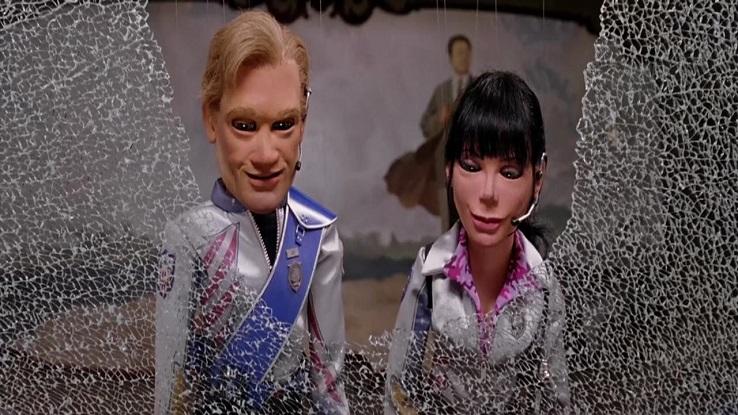
Stone commented, "It was the worst time of my entire life. I never want to run into a puppet again." Stone and Parker vowed they would never direct some other feature film again. To this 24-hour interval, they have kept their word on that front.
The Emperor'south New Groove
If you recall at that place can't be whatever drama producing an blithe film, recollect over again. Disney's 2000 moving picture The Emperor's New Groove had many problems. Originally titled Kingdom of the Sunday, the movie was supposed to be scored by recording creative person Sting. However, his songs were ditched after a tepid response, and the original director (Roger Allers) left the project.
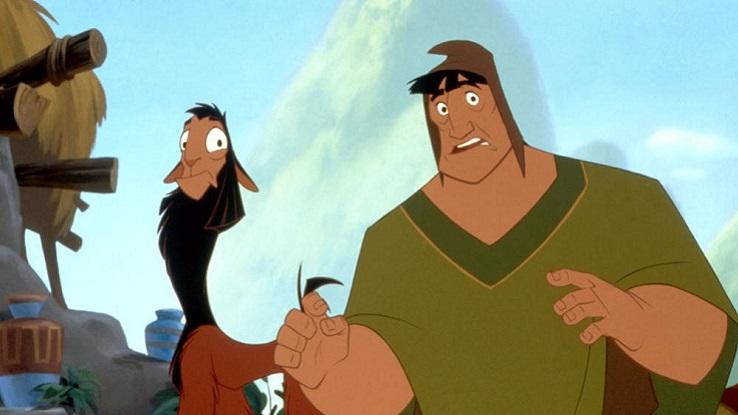
New director Marker Dindal stepped in to salvage the project. The movie'southward budget was overhauled, and Dindal had to piece of work quickly to morph the picture show into a critical and fiscal success. Despite the frantic pace, Dindal succeeded, and the movie grossed $169 one thousand thousand.
The Wolfman
Following Universal's success with the 1999 fantasy The Mummy, director Marking Romanek created 2010's The Wolfman. Unfortunately, the film had some hairy issues. Four weeks into the production, Romanek quit, and Joe Johnston took over. He requested many reshoots, and a new screenwriter was brought in to alter the ending of the original script.
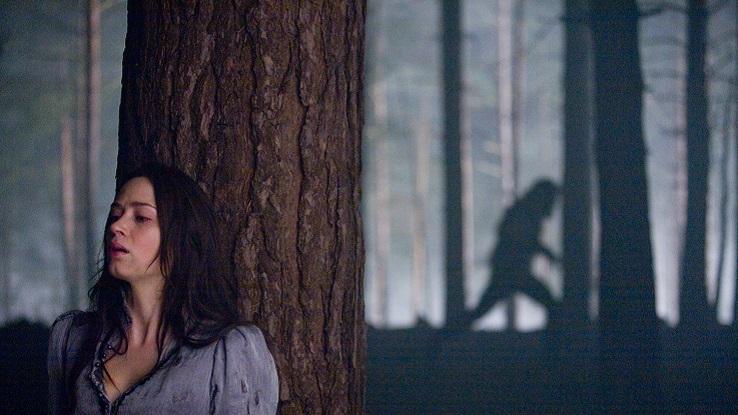
In addition, visual furnishings creators struggled to complete the film's final scenes. New editors were added to the product, and Danny Elfman'southward score was ditched, merely to be subsequently reinstated. Although the film grossed $139 million, information technology didn't come close to the success of The Mummy.
World War Z
Marc Forster's 2013 science fiction thriller World War Z required more extras than the boilerplate picture show. Many of the film'south raging zombies were achieved by CGI, but hundreds of others were existent-life extras. A scene shot in Malta required 900 extras. The number of people on set reached well-nigh 1,500 at one point.
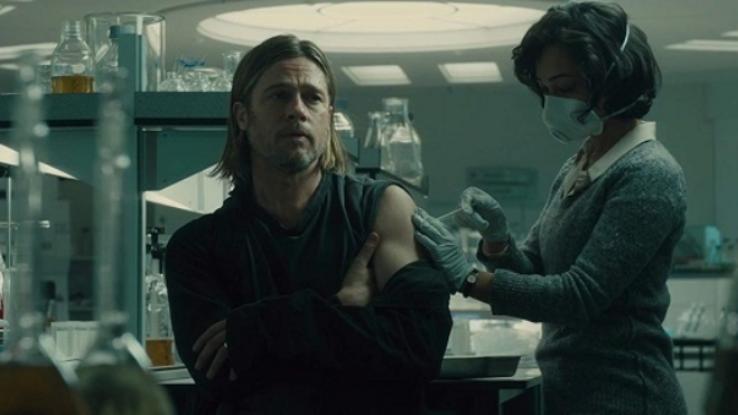
The flick hitting many problems, including seizure of a huge cache of weapons by officials from a counter-terrorism unit. Several action scenes were scratched at the last minute, and the catastrophe was changed multiple times. The picture cost $190 1000000, but information technology was a solid financial hit at the box function, grossing $540 million.
Mad Max: Fury Route
Managing director George Miller spent 14 years of his life working on 2015'south scientific discipline fiction fantasy Mad Max: Fury Road. He insisted on shooting the film with every bit many practical special effects equally possible, and he repeatedly crashed existent cars for the flick's action scenes.
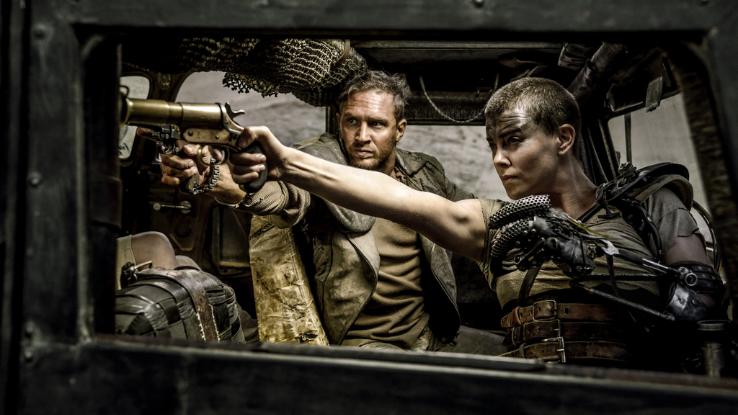
In addition, the film started without an official script. Instead, Miller used hundreds of storyboards. By the time he was finished filming, he had 400 hours of available footage. It must have taken a long fourth dimension to edit the movie, but it was worth it. The film somewhen won an Academy Honour for All-time Film Editing.
Blade Runner
Director Ridley Scott was excited to work on the film adaptation of Philip K. Dick'south 1968 novel Exercise Androids Dream of Electric Sheep? All the same, he probably had no idea just how difficult 1982's science fiction fantasy Bract Runner would become. He had a fractious human relationship with the bandage and crew, leading to many heated debates.
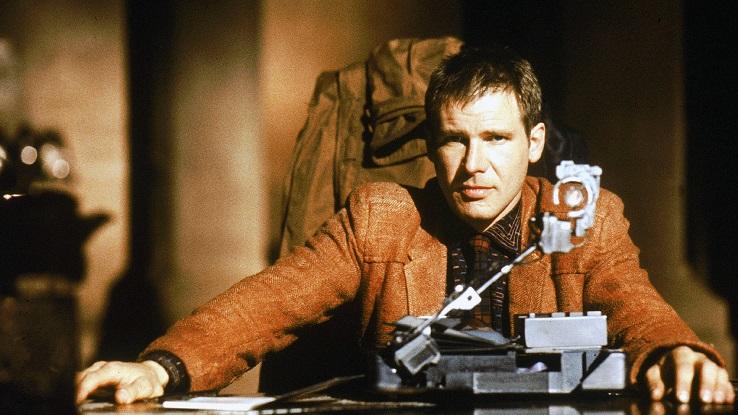
Harrison Ford looked bored almost of the fourth dimension on gear up, and several collaborators described the filming as "torture." The final shot was captured just as producers arrived to pull the plug. The picture show didn't take off at first, but information technology has grown into a cult favorite in the years since its release.
Pirates of the Caribbean area
Producers thought Disney's Pirates of the Caribbean shouldn't have been made. In 2002, Disney CEO Michael Eisner tried to pull the plug, not wanting another box office flop similar The Country Bears. Even extra Keira Knightley had her doubts. When she was asked about her next project, she said, "It's some pirate thing — probably a disaster."
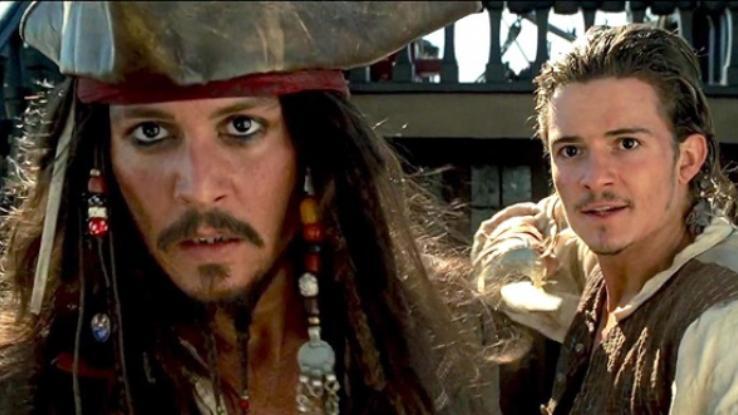
Producers disliked Johnny Depp'due south "Keith Richards" take on Jack Sparrow. Eisner was sure it would ruin the motion-picture show. Despite all the negativity, the film grossed more $650 meg at the global box office and spawned an adored franchise.
Batman
When comic book expert Michael Uslan started working for DC Comics, he had the vision to buy the rights for Batman and make a serious moving-picture show about the Caped Crusader. When he told Vice President Sol Harrison near his idea, Harrison warned him the brand was expressionless and to driblet the project.
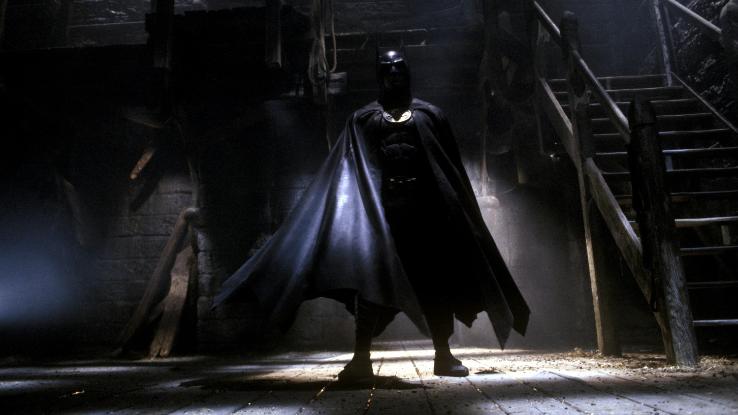
No i supported him, and so Uslan started working without a script or a crew. When role player Michael Keaton signed on to star as Batman, fans sent in more than 50,000 letters in protest. All the same, when the film premiered in 1989, it grossed $411 million globally — and Keaton became the all-time Batman to engagement.
Back to the Time to come
It took some time to get Dorsum to the Future off the basis. Robert Zemeckis and Bob Gale's 1985 science fiction fantasy was turned downward by studios for years. Finally, famed director Steven Spielberg signed on as a producer, and the film institute a domicile with Universal Pictures.
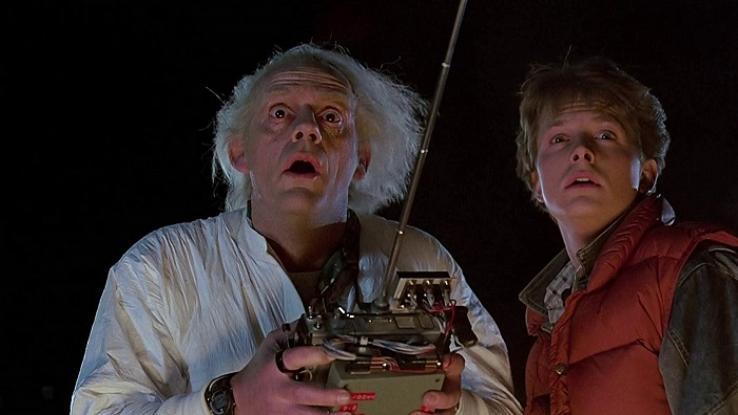
Producers loved the idea of Michael J. Fox starring as Marty McFly, but they were unsure he could commit to the film due to his telly series, Family Ties. They originally cast Mask actor Eric Stoltz, but he was fired, and Fob assumed the role. The flick grossed more than $381 million worldwide and spawned a successful franchise.
Star Wars
Star Wars is one of the biggest franchises of all time. The commencement film, released in 1977, had broad special furnishings, causing the film to autumn behind schedule almost right away. It seemed like a hopeless endeavour at times.
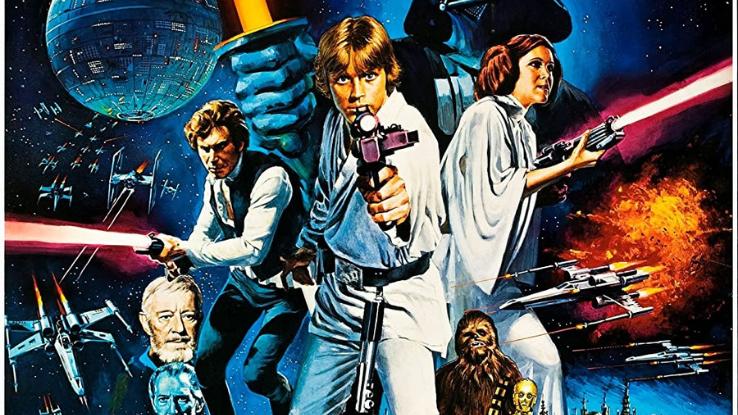
George Lucas blew past the film's budget and was forced to split his coiffure into three split units to finish the flick. Executives at Fox were convinced Star Wars would be a flop, only they were wrong — very, very incorrect. Star Wars was a colossal striking, and the residue is intergalactic history.
Titanic
You would think after James Cameron's experience filming The Completeness he would take avoided water-based movies. Instead, he directed the 1997 historical drama Titanic. The shoot didn't become very well, and crew members described Cameron as a "300-decibel screamer." In addition, actors endured hours in common cold h2o.
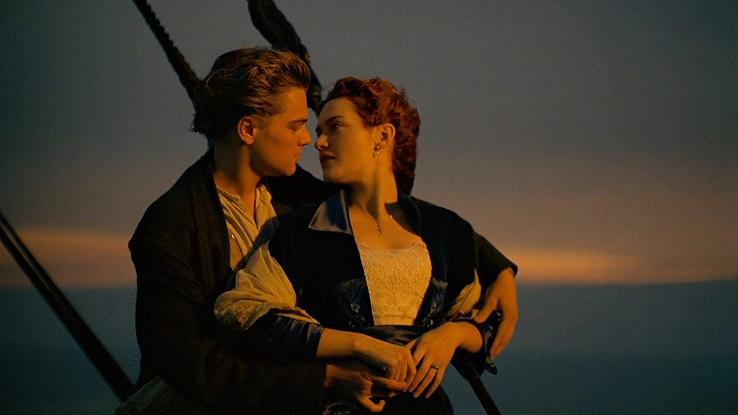
At one bespeak, a crew member spiked the lobster soup with a hallucinogenic drug, which sent Cameron and more than 50 people to the hospital. The upkeep was blown out of the water, but information technology worked out in the end. The motion-picture show grossed more than $2 billion and won Academy Awards for Best Flick and Best Director.
The Shining
Director Stanley Kubrick was determined to turn Stephen Male monarch'due south The Shining into a perfect motion picture. The 1980 psychological horror motion-picture show was a lengthy product. Kubrick ordered multiple retakes, often shooting scenes more than 100 times. The famous "Here's Johnny" scene, which featured Jack Torrance (Jack Nicholson) forcing an ax through a door, took 3 days to film and destroyed more than sixty doors.
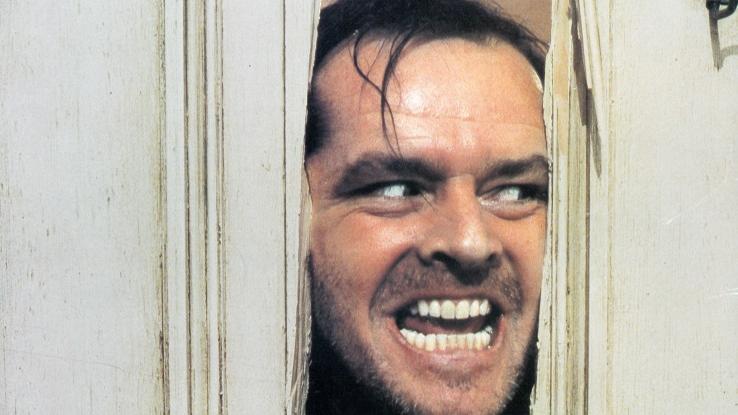
Information technology was only supposed to accept 100 days to film the movie, but production really lasted 250 days. Kubrick was reportedly then hard to work with that actress Shelley Duvall'southward hair began falling out, and she suffered a nervous breakdown. Yikes!
Jaws
In that location has never been a picture show like the 1975 horror drama Jaws. The film went severely over budget due to mechanical problems with Bruce, the moving picture'southward fake shark. Crew members called the motion-picture show "Flaws." It was only supposed to accept 55 days to film the moving picture, but it turned into 159 days.
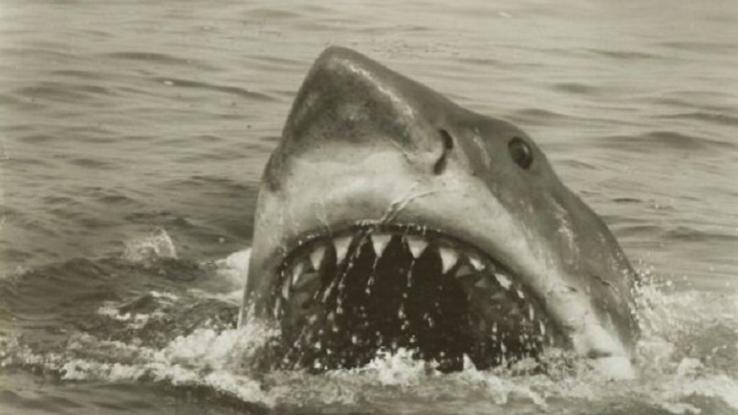
Meanwhile, actors Richard Dreyfuss and Robert Shaw were in a biting feud. It didn't help that the movie's boat had a ruptured hull and actually began to sink. Spielberg was sure his career was over, but the movie grossed more than $100 meg and became one of the virtually pop movies ever fabricated.
Download Software to Record Movie Screen on Mac
Posted by: williamrince1951.blogspot.com
Post a Comment for "Download Software to Record Movie Screen on Mac Updated"